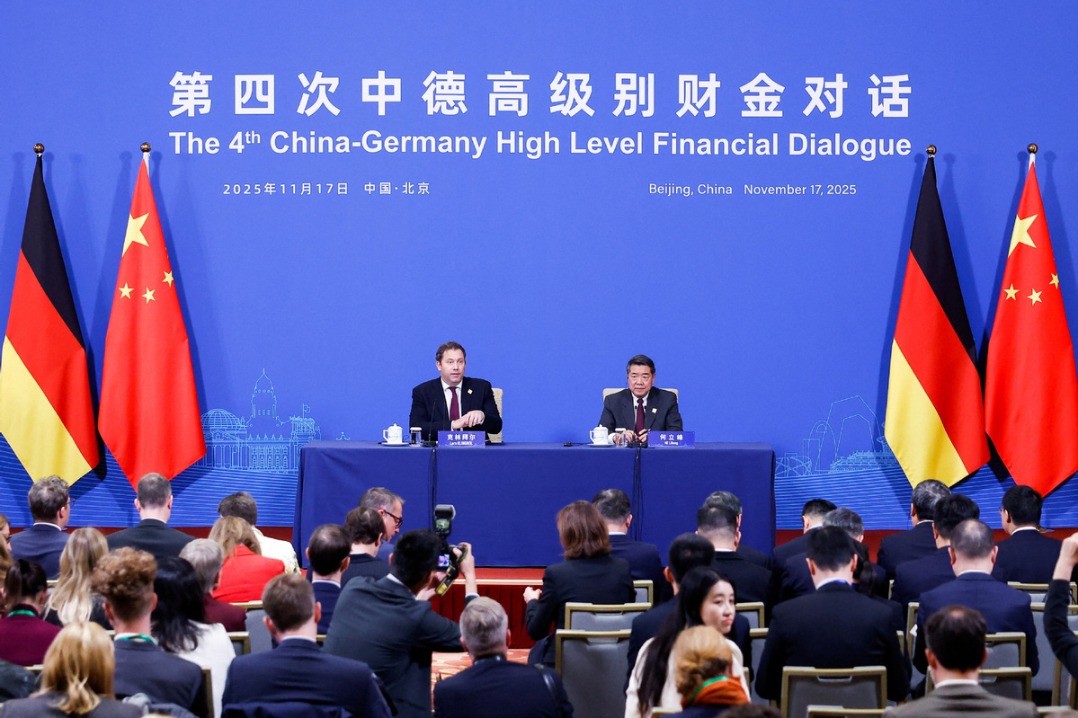Sinopec's geothermal plant connects to grid
By ZHENG XIN | China Daily | Updated: 2024-10-30 09:32
China Petroleum and Chemical Corp's first geothermal power generation demonstration project was connected to the grid and started generating electricity recently, in a strategic pivot toward renewable energy amid the nation's commitment to diversify from traditional oil and gas sources.
Located in a geothermal field in Xianyang, Shaanxi province, the project — combining low-temperature power generation, helium gas extraction from geothermal water, and heating — is significant in expanding the geothermal energy industry chain and optimizing the energy structure, said the company, also known as Sinopec.
Sinopec is the world's largest refiner by volume and the country's biggest geothermal developer.
The project has a heating capacity of 170,000 square meters and an annual power generation capacity of about 700,000 kilowatt-hours, which will provide a consistent energy source that will enhance China's energy security while reducing dependence on fossil fuels, it said.
Geothermal energy, a clean and renewable source with low carbon emissions, offers several benefits, including widespread resource availability, minimal environmental impact, low operating costs and high reliability. This heat can be utilized from natural hot water sources, underground rock heated by the Earth's core, and molten rock known as magma.
In China, geothermal resources are abundant, particularly in the eastern regions where energy demand is highest. This geographic advantage allows for local development and consumption, helping to address the imbalance between energy resource distribution and demand between the eastern and western parts of the country.
According to Sinopec, during the heating season, the geothermal water is extracted for low-load power generation, while helium gas is simultaneously extracted from the geothermal water. After power generation, the geothermal water is reused for heating through heat exchange.
The project will operate at full-load power generation during the non-heating season, extracting helium gas simultaneously, and the used geothermal water is re-injected into the original heat reservoir for reheating via a recharge well, it said.
Analysts believe geothermal energy, a reliable and sustainable power source, offers a consistent output compared to more intermittent renewables like solar and wind. By tapping into this energy source, Sinopec is leveraging China's geothermal potential, particularly in regions rich in geothermal resources, reducing reliance on fossil fuels.
Sinopec's entry into geothermal power reflects a strategic move toward diversifying its energy portfolio, said Wang Lining, director of the oil market department under the economics and technology research institute, China National Petroleum Corp.
Traditionally focusing on oil and gas, Sinopec's embrace of renewable energy signals alignment with China's broader goals of transitioning to cleaner energy sources and achieving carbon neutrality by 2060, he said.
Geothermal heating is currently among the most cost-effective heating methods available and represents a viable path toward achieving China's carbon neutrality goal, said Luo Zuoxian, head of intelligence and research at the Sinopec Economics and Development Research Institute.
However, China faces challenges in geothermal development due to relatively weak foundational research in deep geothermal energy, as well as the engineering complexities and high costs associated with developing high-temperature, high-pressure geothermal reservoirs in hard rock formations, Luo said.
According to Sinopec, helium is a critical strategic resource and is widely used in fields such as aerospace, research, healthcare and industry. As a major manufacturing country, China has a high demand for helium but has long relied heavily on imports. Currently, helium extraction mainly comes from helium-rich natural gas, coal-bed methane and byproducts of air separation units.
The region where the project is located has exceptionally high helium content, Sinopec said.
























